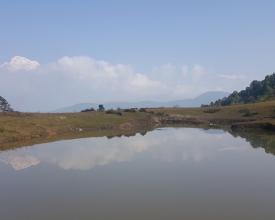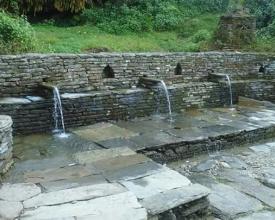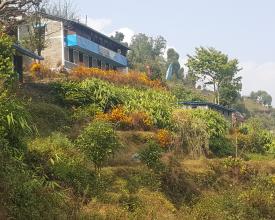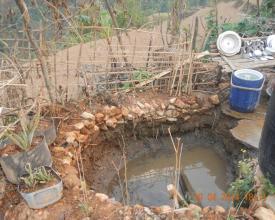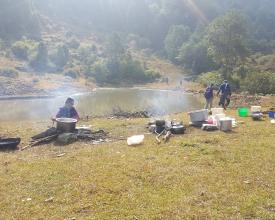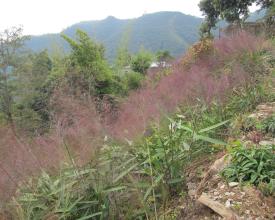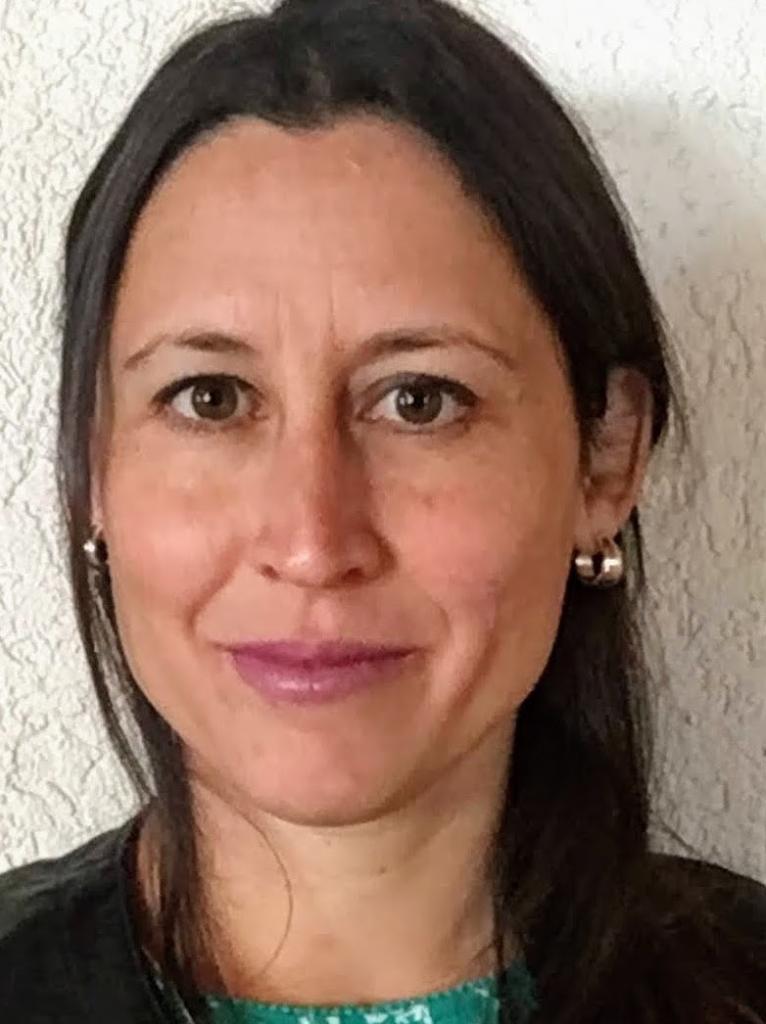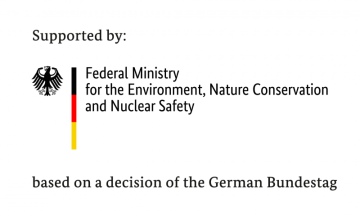
Combining ecological and infrastructural restoration in Panchase Mountainous Region, Nepal
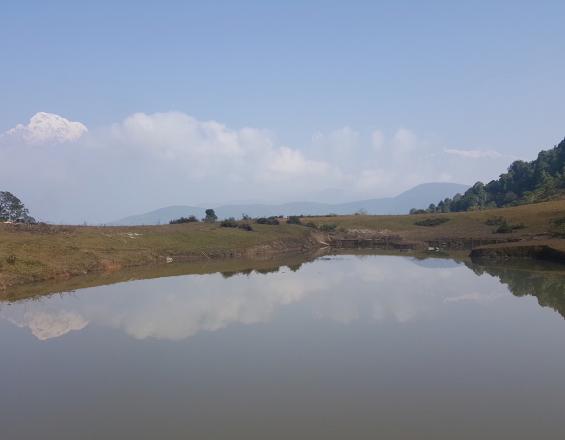
Panchase region is largely dependent on subsistence agriculture, and as such is particularly vulnerable to climate-related challenges. The ecological and infrastructural restoration aimed to address both livelihood and ecosystem-based issues, using both scientific and traditional knowledge to target restoration activities effectively and appropriately: the use of organic farming techniques increased crop productivity and improved resilience to pest and disease; restoring ponds brought both ecological and social benefits by improving water quality and provision; and broom grass planting helped stabilise land, improve yields of farms close to roads by stabilising landslides, reducing soil erosion and maintain access to roads, as well as providing an additional livelihood source in itself. This solution is published as part of the project Ecosystem-based Adaptation; strengthening the evidence and informing policy, coordinated by IIED, IUCN and UN Environment WCMC.
Context
Challenges addressed
Mountain ecosystems are particularly vulnerable to climate change impacts. In Panchase from 1981-2011 the total number of rainfall days decreased from 135 to 120, and the maximum average temperature increased by 0.8°C. Drying water sources, changes in vegetation and cover, rising snowlines have been experienced, leading to increased frequency and severity of drought, flooding and landslides. As water provision becomes less reliable and soil quality depletes, livelihoods are impacted negatively; key crops like rice and maize are harder to grow, the quality of fruit and vegetables is lower, and there are more frequent and new pest attacks. Migration from Panchase has increased, particularly young men, and so more and more land is left barren and unused. Those remaining need options for both livelihood diversification and enhancement of existing livelihoods.
Location
Process
Summary of the process
All three building blocks fit into the EbA remit of designing and implementing activities that comply with the four main principles of additionality, cost-effectiveness, resilience-building of agricultural ecosystems and human well-being, and sustainability. In the Panchase region, building blocks focusing on upstream pond conservation like BBI would have impacts on water availability downstream which, combined with interventions on soil health and organic farming in BBII, would increase productivity and help to protect communities against impacts of climate change. In turn, green infrastructure such as roadside broom grass planting detailed in BBIII would fortify protection against flooding and landslides achieved as part of BBI, and maintain road access and thus access to markets for agricultural products.
Building Blocks
Integrated on-farm soil nutrient management
This building block entails the use of animal dung and urine as organic soil nutrients for improving soil health and farm productivity. Integrated on-farm soil management comprises different elements, such as livestock shed improvement, urine collection and use, compost-making, improved compost pits, bio gas promotion, use of kitchen waste water, seed distribution, Farmer Field School, soil testing and treatment, and organic farming training and practice. Thus this building block allows for a holistic approach for addressing soil degradation, maintaining soil nutrient and moisture content, adapting to rainfall variability, and coping with increased pest and disease.
Enabling factors
Activities were mostly implemented at the household and community level. Careful consideration of beneficiaries is key for activities operating at this small scale. Sites for programme implementation were identified through consultation with local communities and stakeholders, after which a detailed activity plan was developed, considering local conditions, and the interests and skills of the community. Beneficiaries were selected according to specific vulnerability situations, and willingness and interest to participate.
Lesson learned
- Communities should be sensitized to the ecosystem benefits resulting from the integrated soil-management activities; this would provide added impetus to implement, alongside the economic benefits which are already well-understood
- Activities are implemented at a small scale, and the costs and benefits would be very difficult to quantify if the building-block activities were to be scaled up; this may impact replication and/or sustainability of the activities
- The small scale and scattered distribution of the activities also makes their impact less obvious or visible – a comprehensive ecosystem-level vulnerability assessment, developed in conjunction with the relevant local administrative authorities, would help inform a broader adaptation strategy into which integrated soil-management activities could fit
Community pond restoration
Community ponds in Panchase, located in forests and near settlements, are an example of important green infrastructure. Healthy ponds increase water infiltration by reducing water run-off, can reduce water-induced disasters like landslides, and can help with the storage of rainwater; rainwater storage is particularly important in this mountainous region as it helps protect agricultural land and downstream areas from erosion, flooding and landslides. It also helps ensure year-round availability of water. Restoration activities for this building block included water source protection, repair and maintenance of old ponds, and development of water supply arrangements. First, IUCN helped communities to map ponds, after which some were prioritized based on extent of damage, potential for restoring groundwater, and level of dependency of surrounding communities. Locally available materials were used for repairs, to construct basic irrigation infrastructure, and to channel water from nearby sources to try to maintain water supply for as much of the year as possible. More than 60 community ponds were restored, covering three different sub-watersheds in Panchase.
Enabling factors
Use of local and traditional knowledge at all stages – mapping, pond prioritization, and restoration activities – is essential. Drawing on such knowledge enables the use of local materials, which also keeps the cost of implementation low.
Lesson learned
While water availability has increased, there is poor integration with economic activities such as agriculture. In addition, unplanned infrastructure such as road construction and repair can impact negatively on ponds. Better planning and community sensitization would help to address such lack of integration. Note that ecosystem maintenance and management works most effectively at sub-watershed level, but administrative boundaries usually don’t adhere to this, meaning that collaborating with multiple administrative units (e.g. villages) will be necessary.
Workshops and training-of-trainers events, held at the village level, have helped to promote pond restoration through different villages and community conservation groups.
A high level of community participation in implementing the pond restoration activities facilitated the revival of indigenous knowledge and its transfer to younger people. It also fostered understanding between the different stakeholders.
Broom grass cultivation
Plantation of broom grass (thysanolaena maxima) was promoted at roadsides, barren areas and farmlands. Due to its strong web-like rooting system, broom grass helped prevent soil erosion, and stabilize slopes. Broom grass can regenerate quickly even in degraded land, and does not require much maintenance. It can be used to make brooms, the leaves can feed livestock, and the stems and roots provide fuel wood. As such, broom grass planting provides multiple livelihood opportunities, as well as ecosystem services.
Enabling factors
For such a planting scheme to work there must be demand, not only for the products that the plant species offers (in this case brooms, fuel and fodder), but also for the livelihood diversification offered. In this case, out-migration by young men created both demand for an income-generating activity from women, and opportunity for such an activity due to land being abandoned.
Lesson learned
Broom grass planting works well in this situation because it offers both ecological and social benefits; planting programmes would have to select suitable plant species accordingly. In addition, the low labour-intensity and short growing time means there is minimal additional demand placed on women (the primary beneficiaries of this scheme).
Impacts
The adaptive capacity of communities in the ecologically sensitive mountain region of Panchase has been improved by restoring and conserving more than 60 community ponds and 45 water sources. This helps the community against flooding, drought, landslide and unreliable water provision. Water is now available during shorter dry periods. More than 1000 households have improved their livestock sheds, allowing them to collect urine and farmyard manure, both of which help mitigate against impacts of drought as part of an integrated soil management scheme. This increased farm productivity and income, meaning overall vulnerability has been reduced. Broom grass has been used as green infrastructure to restore hillsides and reduce risk of landslides, and helped protect roads, maintaining market access. Pond restoration has improved water provision, maximizing water availability throughout the year, and minimizing the time that must be spent collecting water for farming and livestock. By improving understanding of the applicability of EbA for climate-change planning, project success has helped to make the case for policy change which integrates EbA into Nepal’s national and local forest management.
Beneficiaries
Beneficiaries are all people living around the Panchase region, especially women, poor and vulnerable households who are also members of home stay and community forest within Panchase
Sustainable Development Goals
Story
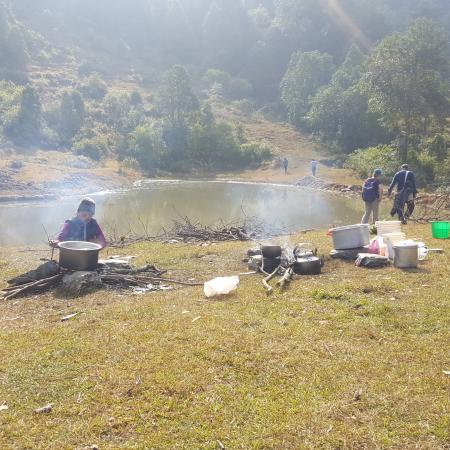
Sushila Devi Gururng, resident of Chitre in Panchase, reported that “During my childhood, the San Daha area was surrounded by rangeland and forest with plenty of water. The water was clean and used for mainly livestock drinking while they are left for grazing in the area. The water was also used by many wild animals. Due to climate change and human activities, the water level of the pond is decreasing, the quality of water is also deteriorating and the size of the pond is shrinking day by day. We now realize the importance of such ponds in water restoration and disaster control, so we have renovated the pond. This pond has also tourism value, where we can see the reflection of mountains in the water, and from there we can see a beautiful scene of mountains and Parbat city. The renovated pond (locally called San Daha pond) lies on the top of Chitre and it is also source of water for downstream people. Due to the renovation the size of the pond has increased and the capacity and amount of water also increased, which contributed to groundwater recharge and sprouting of natural water springs in the downstream areas. Furthermore, the residents of the area have seen an increase in the number of migratory and other bird species and other wild animals in the area since the renovation of the pond. The pond also serves as a picnic spot for local and other people and pilgrims, a water source for wildlife, water harvesting tank during rainy season and a catchment for eroded soil and silt during monsoon.”
